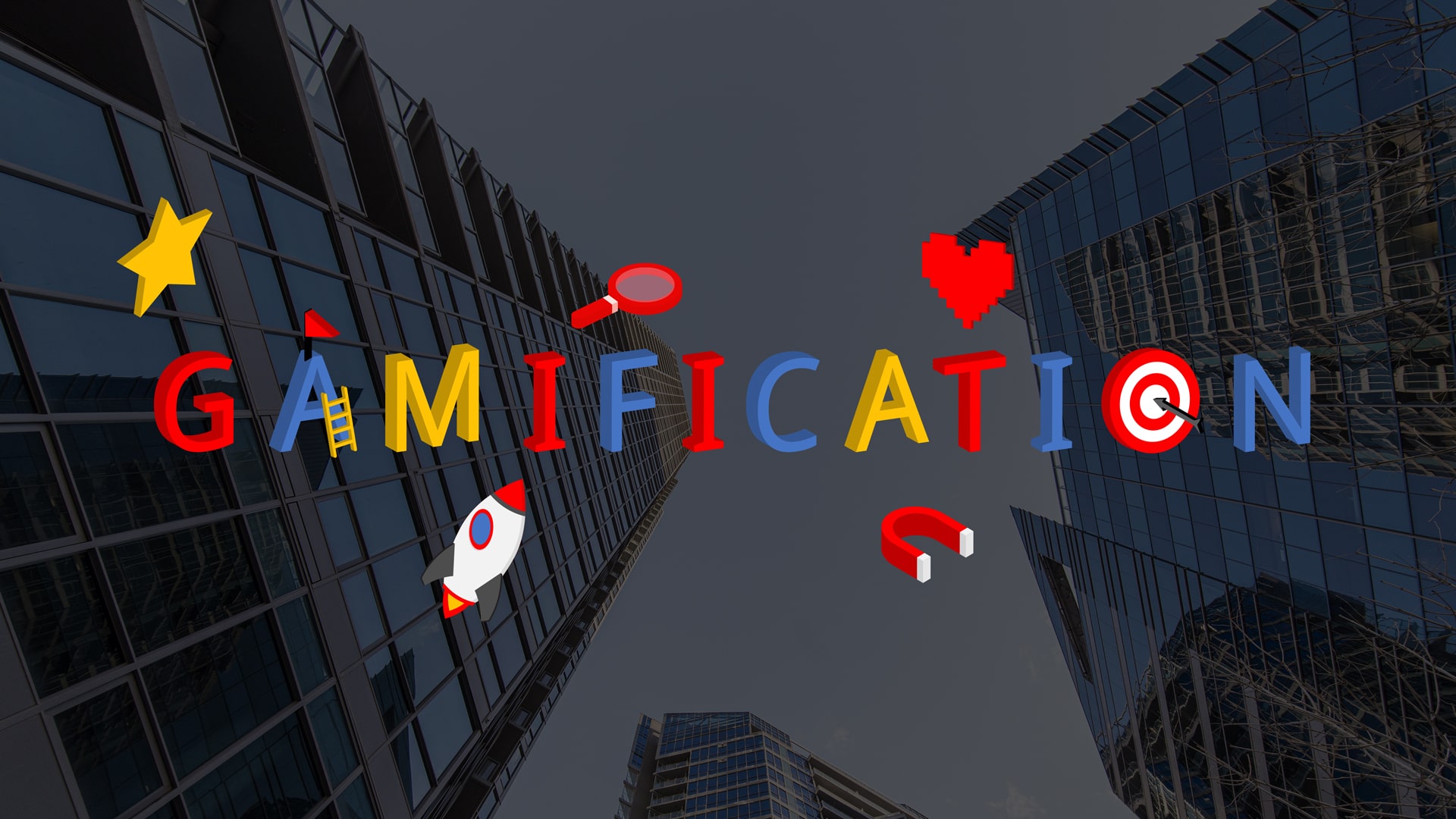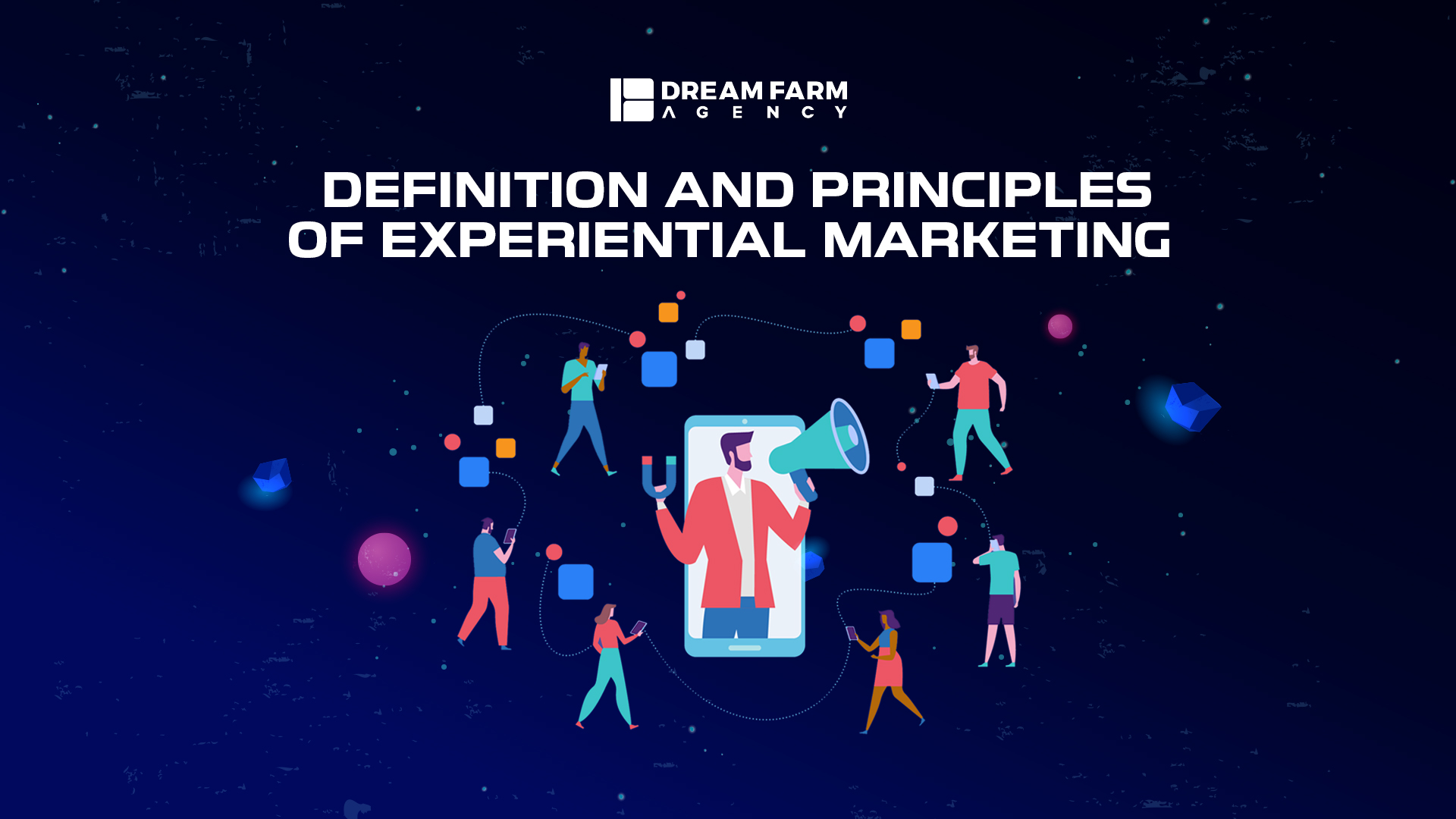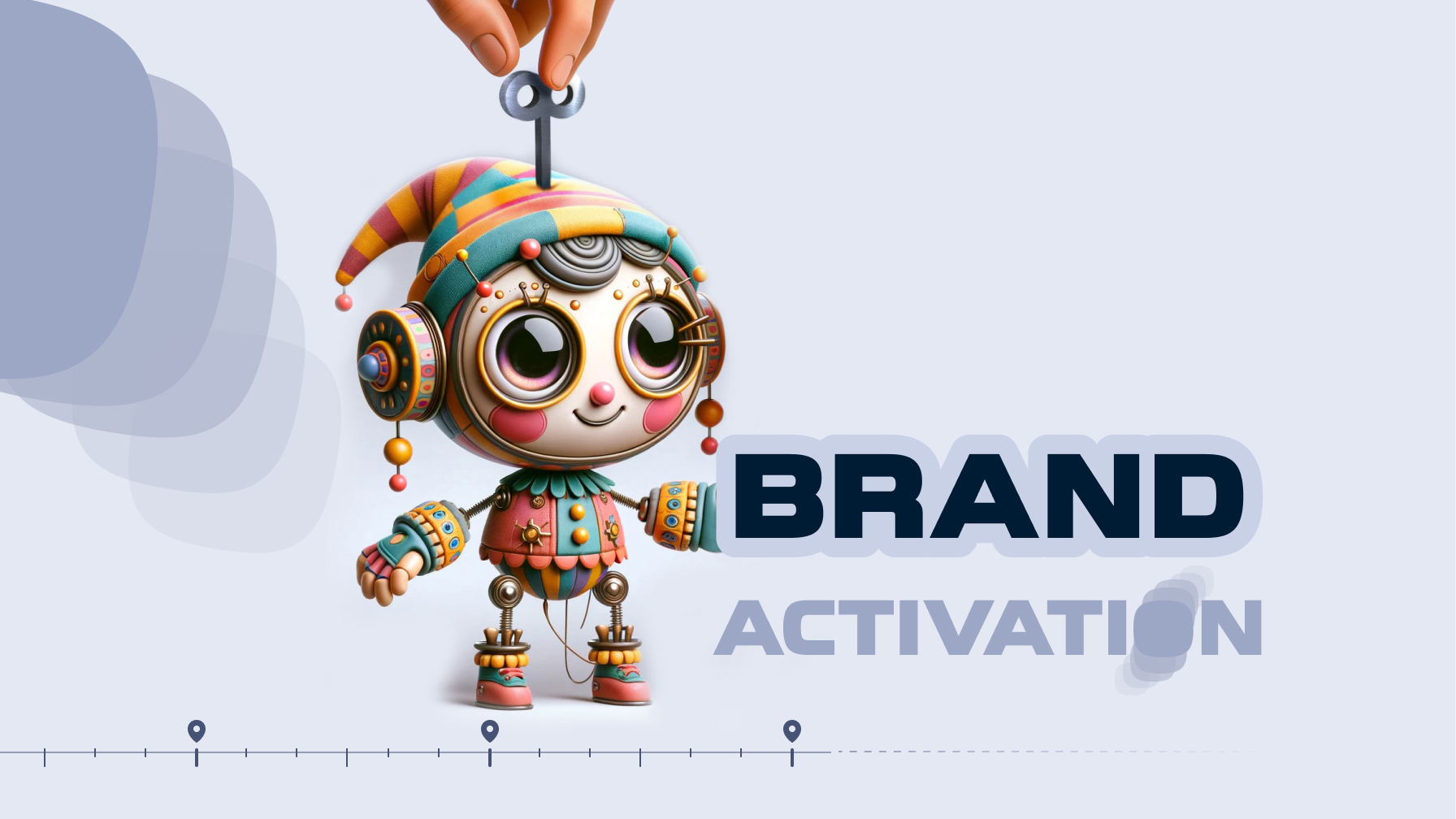
In today’s business world, gamification can unlock new possibilities, making every interaction a step toward success. It’s not just for B2C; it also works wonders in B2B contexts.
By incorporating game-like elements such as challenges, rewards, and competitions into everyday tasks, gamification makes work more engaging and enjoyable.
In this post, we’re diving into interesting gamification examples that can inspire your B2B marketing.
Gamifying B2B Business
Gamification in B2B marketing is about making business-related activities more engaging and interactive by incorporating elements commonly found in games. It aims at encouraging engagement and enhancing brand recognition and loyalty.
Put differently, gamification employs gaming principles in non-gaming contexts, such as B2B marketing campaigns. Gamified elements are integrated into marketing tactics to make experiences more enjoyable and rewarding for participants.
This approach captures people’s attention and taps into human competition and pride instincts, making them more likely to engage with the brand.
Furthermore, gamification is also helpful in B2B loyalty programs. You can encourage businesses to remain loyal to your brand by providing incentives and challenges, driving repeat business, and fostering long-term relationships.
A B2B loyalty program is like a special deal between two companies. It’s a way for the selling company to show appreciation to its B2B buyers and keep them returning for more. This program ensures that both companies trust each other and stay together for an extended period of time.
A key point to remember is that gamification in B2C marketing fundamentally differs from what we have in B2B business. The nuances of the relationships, decision-making processes, customer needs, and product or service complexity can lead to differences in how loyalty is cultivated and maintained.
Therefore, understanding these distinctions is crucial for designing effective gamification strategies in a B2B context.

Gamification in B2B vs. B2C Settings
While both B2B and B2C gamification share the goal of increasing engagement and achieving desired outcomes, their approaches and applications vary significantly.
They differ significantly regarding the target audience, objectives, and implementation strategies. In B2B settings, gamification often enhances productivity, fosters collaboration, and strengthens business professional relationships.
It aims to incentivize behaviors that increase efficiency, communication, and greater satisfaction in business partnerships. It involves incorporating game-like elements such as challenges, leaderboards, or rewards.
On the other hand, the power of gamification in B2C marketing is focused on engaging individual consumers. It hinges on increasing sales and creating engaging experiences for individual consumers.
In B2C settings, gamification often revolves around spontaneous and less serious purchases. It’s about making routine transactions more enjoyable and rewarding for individual consumers.
Gamification in B2C aims to create short-term excitement and immediate gratification. It focuses on adding fun to everyday interactions with the brand, encouraging consumers to engage with the brand regularly.
Decisions may be driven by momentary impulses or influenced by social proof or emotional appeal. The goal is to create an engaging and immersive experience that captures consumers’ attention and encourages them to take immediate action.
B2C gamification is about sparking curiosity, triggering emotions, and guiding consumers toward making decisions in the here and now.
On the other hand, gamification in B2B settings is more professional and serious. It’s about adding value to long-term business relationships and stimulating business collaboration.
In B2B settings, gamification strategies are directed toward enhancing productivity, streamlining processes, and achieving prolonged objectives. It could involve implementing gamified platforms for project management, employee training, or customer relationship management.
The emphasis is on driving sustained engagement and delivering tangible business outcomes over time. A critical factor to bear in mind is that gamification in B2B is about educating and empowering professionals to make informed decisions that are in line with their objectives.
It’s about providing them the tools and resources to succeed professionally and build sustainable business relationships. Overall, in B2B, gamification facilitates learning, collaboration, and decision-making, empowering professionals to make conscious and intentional choices.
Therefore, gamification in a B2B context requires a distinct approach, and it’s essential to grasp its key components for successful implementation.
Two Pillars of Gamification for B2B Companies
A successful B2B gamified program includes essential components that are necessary for its effectiveness:
Clear Objectives
By establishing clear program objectives, B2B companies provide a roadmap for success, ensuring that every player understands their role and what they’re aiming for.
These objectives must also be linked to partner performance, aligning individual efforts with overall business goals. This alignment boosts a performance-driven environment where results matter most.
It ensures that every action taken within the gamified framework contributes directly to desired outcomes. It’s not just about keeping busy; it’s about making meaningful progress toward shared goals.
Accordingly, B2B companies lay the groundwork for a successful gamification strategy that encourages productive behavior and drives business growth.
By emphasizing the importance of clear objectives, B2B companies create a culture of accountability and excellence, where success is measured by activity and tangible results.
Customization
Customization is another crucial component that offers specific tasks within the program. By adapting these challenges to suit individual preferences and behaviors, companies can inject variety and excitement into the experience.
Tailored Solutions
B2B relationships often involve more complex and varied needs compared to B2C transactions. Customization allows B2B companies to use gamification elements to address their clients’ specific pain points and objectives.
Business Alignment
Gamification in the B2B context must align closely with the business objectives and processes of the client organization. Customization enables B2B companies to integrate gamified elements seamlessly into their clients’ workflows, enhancing productivity and achieving business goals more effectively.
ROI and Value Demonstration
B2B clients typically require clear demonstrations of ROI (Return on Investment) and value from the solutions they invest in. Customization allows B2B gamification initiatives to be precisely used to deliver tangible results, making showcasing the value proposition to clients easier.
Differentiated Offerings
Customized solutions help B2B companies differentiate themselves in a competitive market. By offering personalized gamification experiences that address specific client needs, B2B companies can stand out and win more business.
Long-Term Partnerships
B2B relationships often involve longer-term partnerships compared to B2C transactions. Customization fosters deeper engagement and loyalty from B2B clients, leading to more robust and enduring partnerships.
In summary, by offering personalized challenges, companies can keep their audience engaged and invested in the gamification process, ultimately leading to greater success in achieving business objectives.
Evidence of Gamification Impact and Potential
Did you know that 70% of 2000 leading companies globally utilize gamification, recognizing its effectiveness in enhancing engagement and driving results? Surprisingly, 95% of workers acknowledge the benefits of gamification, highlighting its potential to improve productivity and satisfaction in the workplace.
Tech Report studies reveal that gamification can increase happiness in employees by a staggering 89%, underscoring its positive impact on morale and motivation. However, despite its promising advantages, over 70% of gamification projects have failed due to inadequate application and the need for sustained long-term engagement strategies!
The gamification market has seen remarkable growth, with a global value reaching $9.1 billion in 2020. Research by Markets and Markets suggests that this trend will continue, with the market expected to demonstrate an impressive growth rate of 27.4%, achieving a value of $30.7 billion by 2025.
As businesses increasingly recognize the potential of gamification to drive engagement, productivity, and innovation, investments in gamification solutions are poised to soar.
Real-World Gamification Examples
Examples of gamification in B2B contexts showcase the innovative ways in which businesses can engage clients and tackle complex challenges. Success stories serve as inspiring models for using gamification to drive engagement, improve learning, and solve real-world problems in diverse industries.
IBM’s CityOne
IBM’s CityOne is a notable example of gamification in a B2B context. CityOne is an online simulation game developed by IBM that allows players to explore various real-world business challenges and solutions in urban environments.
The game is designed to help businesses and governments understand complex issues such as energy management, water conservation, transportation optimization, and infrastructure planning.
In CityOne, players act as city planners, business executives, and government officials tasked with addressing pressing urban challenges. They are presented with scenarios based on real-world situations and must make strategic decisions to solve problems and improve the city’s overall well-being.
Besides offering solutions that engage simulation, learning, and training, CityOne generates valuable data on player behavior, decision-making patterns, and performance metrics.
IBM can use this data to gain insights into client needs, preferences, and pain points, allowing them to implement their solutions and services more effectively.
Microsoft’s Partner Incentives Program
Microsoft’s Partner Incentives program is another excellent example of gamification in a B2B context, offering a platform where partners can engage in various activities to earn rewards and incentives.
The program is designed to motivate and incentivize Microsoft’s network of partners, including resellers, consultants, and developers, to drive sales, enhance product knowledge, and foster customer relationships.
Partners earn points by completing specific tasks, such as selling Microsoft products, attending training sessions, or generating leads. They can exchange points for rewards, including discounts, training vouchers, or marketing support.
By gamifying the partner experience, Microsoft creates a competitive and engaging environment where partners are motivated to increase their productivity, expand their knowledge, and collaborate with others.
The program incentivizes sales performance and promotes continuous learning and skill development among partners, ultimately driving business growth and customer satisfaction.
The Partner Incentives program also enables Microsoft to collect valuable data on partner activities, preferences, and performance metrics. The gamified platform also develops a sense of community and camaraderie among partners, encouraging collaboration and knowledge sharing across the ecosystem.
Cisco’s Champions Program
Cisco’s Champions aims to incentivize and empower Cisco’s partners and advocates to engage actively with the company’s products and services.
Through the Champions Program, Cisco implements gamification elements such as points, badges, and leaderboards to recognize and reward participants for their contributions.
Participants earn points by completing various activities, such as attending training sessions, sharing knowledge on forums, creating content, or participating in events. They can exchange these points for rewards such as merchandise, event tickets, or exclusive access to resources.
By gamifying the engagement experience, Cisco cultivates a sense of competition and achievement among participants, motivating them to actively promote Cisco products and services and contribute valuable insights to the community.
The program motivates sales performance and encourages community building, knowledge sharing, and collaboration among participants, ultimately strengthening Cisco’s partner ecosystem.
Additionally, the Champions Program is a platform for Cisco to gather feedback, insights, and advocacy from its partners and advocates. It also reinforces participant loyalty and commitment to Cisco.
Participants feel valued and appreciated for their contributions, resulting in increased engagement and retention within the Cisco community. It ultimately drives mutual success within its partner ecosystem.
Salesforce’s Trailhead
Trailhead combines education, training, and gamification to empower users to learn at their own pace while earning badges and points for completing various challenges and modules.
Salesforce’s Trailhead features diverse learning paths, modules, and projects designed to adapt to users with different skill levels and interests.
Users can explore topics such as sales, marketing, customer service, and app development, with each module providing hands-on experience and practical knowledge through interactive tutorials, quizzes, and coding exercises.
One of the critical aspects of Trailhead’s gamified approach is its badge and points system. Users earn badges by completing modules and projects, each representing a specific skill or achievement.
They can be showcased on users’ profiles, providing a tangible and visible representation of their expertise and accomplishments within the Salesforce ecosystem.
Trailhead also incorporates gamification elements such as leaderboards and challenges to foster user competition and collaboration. Leaderboards display rankings based on points earned, encouraging users to strive for higher positions and engage more deeply with the platform.
By offering a fun and interactive learning experience, Trailhead encourages users to explore Salesforce features, best practices, and use cases. As a result, they will become more effective and successful Salesforce administrators, developers, and users.
SAP’s Community Network
SAP’s Community Network (SCN) is another example of gamification in a B2B context. It is a platform for SAP users, developers, partners, and experts to connect, collaborate, and share knowledge about SAP products and solutions.
SCN leverages gamification elements to encourage active participation, recognition, and contribution within the community, enhancing engagement and the overall user experience.
One of the vital gamification elements of SCN is its points and badge system. Users earn points by participating in various activities such as answering questions, sharing insights, writing articles, and providing feedback.
SCN also features leaderboards that showcase top contributors based on their point accumulation and activity levels. Leaderboards are a source of motivation for users to increase their participation and strive for higher rankings within the community.
It also incorporates gamification elements such as missions and quests to guide users through their learning journey and encourage exploration of SAP products and technologies.
This gamified learning approach motivates users to acquire new skills and fosters a sense of achievement and accomplishment. It also promotes mutual learning and strengthens relationships between SAP and its ecosystem of users and partners.
IBM’s Food Trust Network
Food Trust Network is a pioneering example of gamification in a B2B context, built on blockchain technology and rewards to enhance transparency and traceability in the food supply chain.
IBM Food Trust Network provides a platform for participants across the food industry, including growers, suppliers, manufacturers, distributors, and retailers, to collaborate and share trusted information about the origin, production, and journey of food products.
One of the critical gamification elements of the Food Trust Network is its blockchain-based rewards system. Participants earn rewards, such as tokens or credits, by contributing data and verifying transactions on the blockchain.
Through the gamified rewards system, IBM encourages participants to adopt best practices for food safety, quality assurance, and sustainability. For example, growers may receive rewards for implementing organic farming practices or using environmentally friendly packaging materials.
Participants can join forces to tackle issues such as food fraud, supply chain disruptions, or regulatory compliance, leveraging the transparency and traceability enabled by blockchain technology.
By enabling consumers to make informed choices, the network promotes transparency and trust in the food supply chain, ultimately enhancing food safety and sustainability.
In summary, IBM’s Food Trust Network exemplifies how gamification can be effectively utilized in a B2B context to drive collaboration, transparency, and trust within complex ecosystems such as the food industry.
Siemens Healthineers’ Virtual Gaming
Siemens Healthineers’ use of AR and VR technologies in a B2B context is a remarkable example of gamification within the healthcare industry. Development in medical training, surgical planning, and patient education ultimately improves outcomes and experiences for healthcare professionals and patients alike.
One significant AR/VR gamification application by Siemens Healthineers is in medical training and education. Healthcare professionals, including doctors, surgeons, and medical students, can use AR/VR simulations to practice procedures, surgeries, and diagnostic techniques in a realistic virtual environment.
These immersive training experiences allow for hands-on practice, skill development, and scenario-based learning, leading to better preparedness and confidence among medical professionals.
In surgical planning and visualization, Siemens Healthineers utilizes AR/VR gamification to enhance preoperative planning and decision-making. Surgeons can use AR/VR tools to view patient-specific anatomical models, overlaying imaging data such as MRI or CT scans onto the patient’s anatomy in a virtual environment.
This gamified approach enables surgeons to visualize complex structures, simulate surgical procedures, and anticipate potential challenges, ultimately leading to more precise and successful surgeries.
Doctors and specialists can use AR/VR tools to conduct virtual meetings, share medical images and data, and collaborate on treatment plans in real time, regardless of geographical location.
This gamified approach enhances communication, coordination, and decision-making in multidisciplinary care teams.
LinkedIn’s Sales Navigator Training Center
LinkedIn has provided a platform for sales professionals to enhance their skills and proficiency using LinkedIn Sales Navigator, a tool designed to help businesses find and engage with potential leads and customers on the LinkedIn platform.
The Sales Navigator Training Center integrates gamification elements to make learning more engaging, interactive, and rewarding for users.
One key gamification element the Sales Navigator Training Center employs is its modular learning approach. The training content is divided into bite-sized modules, each focusing on specific features and functionalities of Sales Navigator.
Users can progress through the modules at their own pace, completing quizzes and assessments to test their understanding and retention of the material.
Another gamification element the Sales Navigator Training Center utilizes is its achievement system. Users earn badges and certifications upon completing modules and passing assessments, providing tangible recognition of their knowledge and skills in using Sales Navigator.
Furthermore, the Sales Navigator Training Center incorporates gamified challenges and competitions to foster friendly competition and user collaboration. Users can participate in challenges such as completing a certain number of modules within a specified timeframe or achieving a high score on a quiz.
In addition to these gamification elements, the Sales Navigator Training Center provides users with practical, real-world examples and case studies to strengthen their learning and demonstrate the value of Sales Navigator in driving sales and business growth.
Google Cloud’s Partner Advantage Program
The Partner Advantage Program integrates gamification elements to engage partners, recognize their achievements, and encourage collaboration within the Google Cloud ecosystem.
As partners achieve more badges, they unlock access to additional benefits, resources, and support from Google Cloud, such as marketing assistance, training programs, and technical expertise.
This tiered approach motivates partners to increase their commitment and investment in promoting Google Cloud solutions, leading to mutual growth and success.
Another gamification element the Partner Advantage Program employs is its performance-based incentives and rewards. Partners can earn rewards, such as financial incentives, discounts on Google Cloud products and services, and opportunities for co-marketing and co-selling initiatives.
These rewards provide tangible recognition of partners’ efforts and incentivize them to drive business outcomes aligned with Google Cloud’s strategic objectives.
The Partner Advantage Program incorporates gamified training and certification opportunities to help partners develop the skills and expertise needed to succeed in selling and implementing Google Cloud solutions.
In addition to these gamification elements, Google Cloud’s Partner Advantage Program fosters collaboration and networking among partners through various community-building initiatives.
This collaborative environment encourages knowledge sharing, innovation, and partnership opportunities, ultimately strengthening the Google Cloud ecosystem and driving collective success.
Amazon’s Web Services (AWS) Quests
Amazon Web Services (AWS) Quests is another example of gamification in a B2B context, providing a dynamic and engaging platform for users to learn about AWS services and solutions through interactive challenges and quests.
AWS Quests uses gamification elements to motivate participants, reinforce learning, and foster skill development in cloud computing.
Central to AWS Quests’ gamification strategy is its interactive challenges and quests. Participants embark on virtual journeys that guide them through various AWS services and features, challenging them to solve puzzles, fulfill tasks, and overcome obstacles.
Each quest is designed to be immersive and educational, allowing participants to apply their knowledge in real-world scenarios and acquire practical experience with AWS technologies.
One key aspect of AWS Quests’ gamification is its points and rewards system. These points contribute to participants’ overall rankings and standings within the AWS Quests community, providing a sense of achievement and recognition for their efforts.
AWS Quests integrates social and collaborative elements to enhance the learning experience. Participants can connect with peers, share insights and strategies, and collaborate on solving challenges through online forums, social media groups, and live events organized by AWS.
AWS also offers guidance and assistance from technical experts and mentors, providing personalized support and feedback to help participants achieve their learning objectives.
Advantages of Gamification for B2B Companies
These examples of gamification demonstrate that gamification’s transformative power helps offer valuable advantages to businesses and participants alike. Below, you can find the most essential benefits of gamified elements in B2B settings:
Increased Engagement
Gamification makes complex B2B processes more engaging by incorporating game-like elements such as challenges, rewards, and competition. This increased engagement leads to better participation, adoption, and retention of products, services, and training programs.
Improved Learning and Training
B2B companies can use gamification to make learning and training more effective and enjoyable for employees and clients. Turning training modules into interactive games allows them to grasp complex concepts more efficiently, leading to faster acquisition and better engagement.
Enhanced Productivity
Gamification can motivate employees and clients to achieve specific goals and tasks more efficiently. By introducing game mechanics such as points, levels, and leaderboards, B2B companies can encourage desired behaviors and boost productivity.
Behavioral Insights
Gamification provides valuable data and insights into user behavior, preferences, and performance. B2B companies can analyze this data to understand their clients’ needs and challenges better, allowing them to take advantage of their offerings and services more effectively.
Customer Loyalty and Satisfaction
Gamification can help B2B companies build stronger client relationships by providing interactive and rewarding experiences. By incorporating gamified elements into their products and services, B2B companies can increase customer loyalty, resulting in repeat business and positive word-of-mouth recommendations.
Differentiation and Competitive Advantage
B2B companies can differentiate themselves in a crowded marketplace by offering unique and engaging experiences. Companies that successfully implement gamification can stand out from competitors, attract more clients, and command premium pricing for their products and services.
Data-Driven Decision Making
Gamification platforms generate valuable data that B2B companies can use to make informed decisions and streamline their operations. By analyzing metrics such as engagement levels, completion rates, and performance trends, companies can identify areas for improvement and fine-tune their strategies accordingly.
Innovation and Creativity
Games encourage creativity and innovation by providing a playful environment where employees and clients can experiment, collaborate, and problem-solve. B2B companies can use gamification to inspire new ideas, drive continuous improvement, and stay ahead of market trends.
In conclusion, gamification offers a wide range of benefits and advantages for B2B companies, which lead to increased sales. In other words, by incorporating gamification into their strategies and offerings, B2B companies can achieve greater success and differentiation in today’s dynamic business landscape.
Wrapping Up
With its proven ability to transform traditional processes into dynamic and interactive experiences, gamification is a powerful tool for businesses aspiring to succeed in today’s competitive landscape.
At Dream Farm Agency, we understand the importance of gamification in empowering businesses to achieve their goals and objectives. Our gamified solutions are designed to provide dynamic and interactive experiences.
By integrating gamification elements, our solutions drive business growth, innovation, and success while creating vibrant and collaborative environments. Explore more about our gamification consulting services to discover how we can help your B2B initiatives thrive. Let us know about your ideas to unlock the potential of gamification in the comment box below.

Rojan



